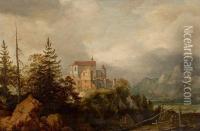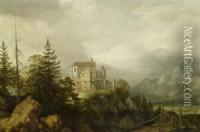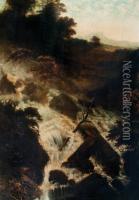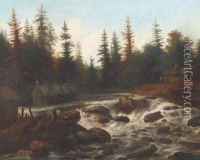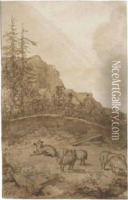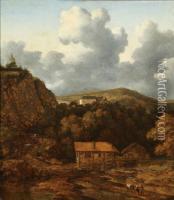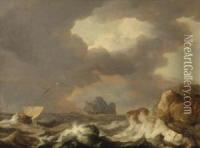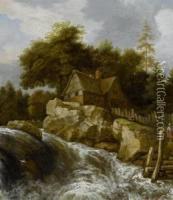Allart Van Everdingen Paintings
Allart van Everdingen was a Dutch Golden Age artist known for his landscapes and seascapes imbued with a Nordic atmosphere. Born in Alkmaar, North Holland, in 1621, Van Everdingen was the younger brother of Caesar van Everdingen, a portraitist. Allart initially trained with Roelandt Savery in Utrecht and later with Pieter de Molijn in Haarlem. His early works were influenced by these masters, and he soon developed a keen interest in depicting natural scenes. In 1644, Van Everdingen embarked on a pivotal journey to Scandinavia, which profoundly influenced his artistic style. The dramatic Scandinavian landscapes, with their rugged mountains, waterfalls, and wooden structures, became a hallmark of his work. Upon returning to the Netherlands, he settled in Haarlem and later moved to Amsterdam in 1652. It was during this period that he produced a significant body of work, which included etchings, drawings, and paintings. Van Everdingen was a pioneer in the development of the Nordic landscape genre within Dutch art. He was also influential in the spread of this style, which can be seen in the works of artists such as Jacob van Ruisdael. Van Everdingen's landscapes are characterized by a dramatic use of light and shadow, a sense of vastness, and a depiction of the untamed natural world. His works were also notable for the inclusion of Scandinavian motifs, such as log cabins and pine trees, which were novel to Dutch audiences. Allart van Everdingen died in Amsterdam in 1675. His legacy includes not only his own body of work but also his impact on the Dutch landscape tradition. His depictions of the Nordic wilderness contributed to a broader understanding and appreciation of landscape art in the Dutch Golden Age and beyond.

